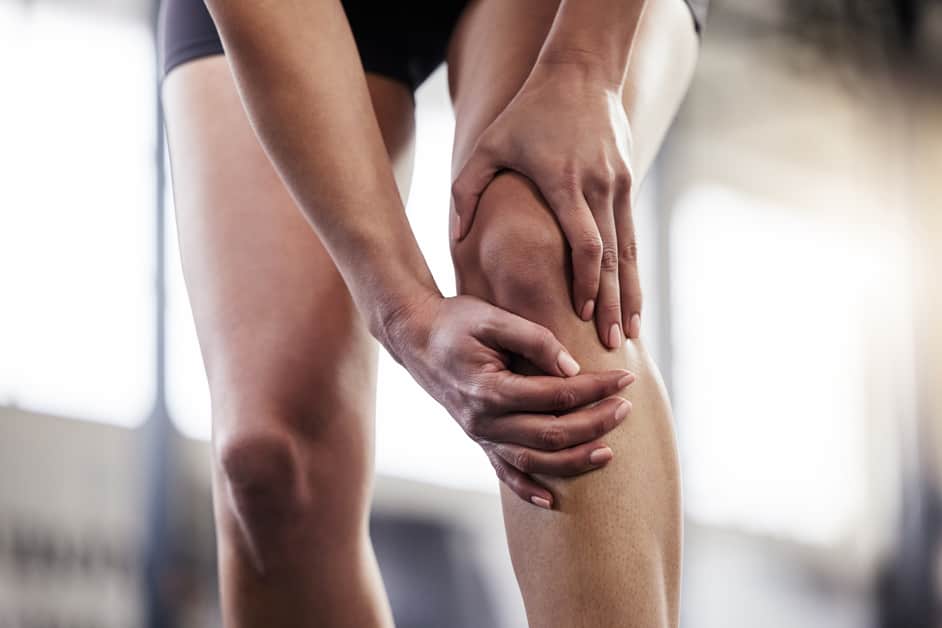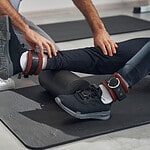Introduction
Massage therapy is a well-known type of alternative medicine. It has been used for centuries to help with physical pain, including knee discomfort. The techniques used can boost circulation, ease inflammation, lower stress, and give relief for knee pain. This article looks into the advantages of massage therapy to offer knee pain comfort.
Definition of Massage Therapy
Massage therapy is a type of manual therapy. It involves manipulating muscles and connective tissue to reduce pain and tension. It is a holistic approach to health. Therapists use their hands and fingers to apply pressure, movement and techniques that enhance healing or reduce discomfort.
Therapeutic massage can also address mental and emotional stressors. It can improve overall well-being, encourage relaxation, promote circulation, and boost the immune system. Massage can help relieve stiffness in muscles and joints and decrease headaches and tension-related muscle pain.
There are different approaches to massage therapy. Some use oil-based products, others prefer non-oil based. Therapists may also choose from a variety of massage techniques. These include:
- Swedish massage
- Deep tissue massage
- Trigger point release
- Sports massage
The therapist will assess your needs before treatment.
Overview of Knee Pain
Knee pain is common and can come from many sources. It is a complicated joint and can be afflicted with conditions such as ligament injuries, tendinitis, arthritis, bursitis, stress fractures and muscle strain. Structural damage may not be reversible, but massage therapy can provide relief.
Massage therapy releases restrictions caused by overused or strained muscles in the knee. Pressure or kneading techniques are used to ease tension and reduce inflammation. This helps improve range of motion, healing times and rehabilitate previous injury sites.
By having regular massage sessions, pain relief and reduced swelling can be experienced. Massage also helps maintain general wellness through better circulation, increased joint mobility, and improved nerve functioning.
Types of Massage Therapy
Massage therapy is awesome for decreasing knee pain and maintaining joint health. It can help reduce any stiffness and improve knee joint flexibility.
There are several types of massage therapy to choose from, like Swedish massage, deep tissue massage, trigger point therapy, and lymphatic drainage massage. Let’s analyze each of these massage types and how they can help with knee pain.
Swedish Massage
Swedish massage is well-known. It involves long strokes, kneading and friction techniques on the surface muscles. It helps with relaxation, increases circulation and releases toxins. It is used for knee pain.
DJ Ling developed it to help with illnesses caused by industrialization. Swedish massage uses five strokes: effleurage (gliding), petrissage (kneading), tapotement (rhythmic tapping), friction (cross fiber) and vibration/shaking.
The goal is to use these techniques with breathing and relaxation techniques. This focuses on specific muscle groups for healing. Depending on individual needs, several sessions may be needed for knee pain relief.
Deep Tissue Massage
Deep tissue massage is a type of therapy that focuses on realigning deeper muscle and connective tissue layers. It helps with chronically tense and contracted areas, like stiff necks, low back tightness, and sore shoulders.
Unlike other techniques that focus on relaxation, deep tissue massage concentrates on a specific problem. Such as chronic muscle pain, injury rehabilitation, postural distortion, or limited mobility.
During this massage, slower strokes and direct pressure or friction are applied along the grain of the muscle. This helps release tension from deep areas, and can reduce scar tissue adhesion and stiff joints. It may even break up calcium deposits, improving fascia and muscle flexibility.
It’s important to be aware that if you have a blood clotting disorder, deep tissue massage could be more harmful than helpful. If you’re in pain or have an injury, it’s best to consult your doctor before receiving any type of massage therapy. This way, you can get on the path to feeling your best as soon as possible!
Trigger Point Massage
Trigger point massage is a type of therapy that relieves chronic knee pain. It works by pressing down on specific points along the muscle. This releases trigger points, small areas of hyperactivity causing tension and pain. The pressure should be maintained for 7-10 seconds per point for best results. Speak to your therapist about the amount of pressure you need.
Stretching exercises and lifestyle changes can also help. Trigger point massage provides relaxation and reduces other body tension. It’s great for treating knots caused by sports or overuse of the knee joint.
Benefits of Massage Therapy for Knee Pain
Massage therapy is awesome for knee pain relief! It increases blood flow and reduces swelling. Plus, it boosts muscle strength, decreases stress and encourages relaxation.
Let’s dig deeper into the advantages of massage therapy for knee pain relief!
Improved Mobility
Massage therapy helps improve mobility and flexibility in joints and reduce stiffness. This can make movement easier and decrease discomfort. It also reduces swelling, which is often caused by knee injuries and arthritis. Massage works by improving circulation, providing oxygen, and other needed nutrients that aid healing. The rhythmic strokes help stimulate production of synovial fluid which lubricates the joint, reducing stress on tendons.
Moreover, regular massage treatments paired with physical therapy or exercise can reduce pain from sore muscles or pulled tendons. Massage therapists target specific tissues with manual pressure, releasing tension on muscles involved in knee mobility and aiding stability during activities such as jogging and sports.
Reduced Inflammation
Massage therapy sessions can reduce inflammation in the knee. The massage therapist kneads and applies pressure to the knee, improving circulation. This helps bring oxygen and nutrients to the area, reducing inflammation and muscle pain/stiffness. Massage also aids lymphatic flow, flushing toxins from the area. Improved circulation gives relief from existing pain and prevents future pain caused by tension. Relaxation response caused by massage decreases cortisol, further reducing inflammation.
Increased Circulation
Massage therapy has been proven to help with knee pain relief. Research shows it boosts circulation, lessens inflammation, and offers comfort. Poor circulation can lead to congestion and inflammation in the knee area.
Massage helps by breaking down adhesions between muscles and tendons around the knee joints. It also helps restore normal muscle tone and increases joint range of motion. Improved blood flow lessens pain and helps with mobility. This makes everyday activities, like walking or sports, more comfortable.
Safety Considerations
Massage therapy is a great fix for knee pain. But, safety must be taken into consideration. Certain areas of the knee are sensitive. If massage is too strong or in wrong places, damage can occur. So, it’s important to be aware of risks.
Make sure the massage therapist is trained and experienced in treating knee pain.
Check with your doctor
Before you start any massage therapy to ease knee pain, talk to your doctor first. Make sure massage is a suitable treatment for you. Keep safety in mind too.
- Discuss any medical issues or medicine that could be affected by massage.
- Find out what areas massage should stay away from around the knee.
- Be aware if you have any physical limits or soreness. Knowing what areas need care can help give the best treatment.
- Tell your therapist if anything starts to hurt. They will change their technique if needed. Always stick to what you’re comfortable with.
Avoid certain massage techniques
For knee pain relief, there are massage techniques you can use and others that should be avoided. If your knee pain is acute or recent, it’s best to stay away from deep tissue or other aggressive massage. Gentler strokes will provide relief. Do not apply direct pressure on the affected area. Also, avoid muscle stretching and aggressive manipulation of the joint.
When knee pain is chronic or long-standing, massage therapists may use deeper pressure. This helps improve circulation and releases tightness. Trigger point therapy and myofascial release are effective techniques. They can reduce pain in certain joints and relieve tension from adjoining muscles.
Before the massage session, tell your therapist if you have any sensitivities or limitations concerning pressure or techniques. Describe where and how you experience pain so they can adjust their touch and apply pressure correctly. The therapist should check for discomfort before continuing with any technique.
Listen to your body
Listen to your body while getting massage therapy for knee pain relief. Comfort is most important. If you feel discomfort, tell the massage therapist. They may need to adjust the pressure.
Know how much pressure is too much. Be honest with the massage therapist. Overworking or not massaging certain areas can cause trauma and injury.
Stretch after massage therapy. This makes sure the work is integrated into the muscles. Stretching also keeps you safe from unexpected strain and a lack of range of motion.
Conclusion
To sum up, massage therapy is a good way to ease knee pain. It targets muscles, ligaments, and tendons around the knee. Regular massages bring down pain, swelling, and stiffness, increase motion range, and reduce scarring. Moreover, it can boost circulation around the knee, which makes the joint work better.
If you suffer from long-term knee pain due to an injury or illness, massage therapy sessions may be the natural solution for you.
Frequently Asked Questions
Q1: What are the benefits of massage therapy for knee pain relief?
A1: Massage therapy for knee pain relief can help reduce inflammation, improve circulation, and reduce muscle tension and spasms. It can also help to improve range of motion, decrease pain, and increase relaxation.
Q2: How often should I receive massage therapy for knee pain relief?
A2: The frequency of massage therapy for knee pain relief depends on the severity of your condition. Generally, it is recommended to receive massage therapy on a regular basis, such as twice a week, to maintain the effects of the therapy.
Q3: Is massage therapy for knee pain relief safe?
A3: Yes, massage therapy for knee pain relief is generally safe. However, it is important to consult with your doctor before beginning any form of massage therapy as there may be certain health conditions that would make massage therapy inadvisable.





